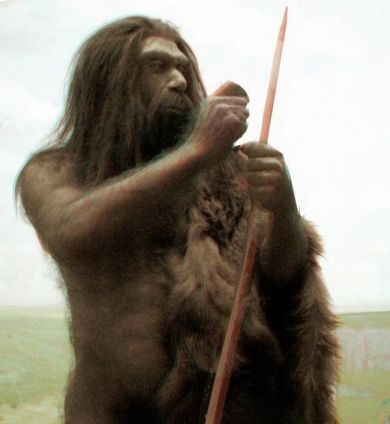Three researchers from France examined the mitochondrial DNA from published Neanderthal sequences and found that they had at least three separate populations: in Western Europe, Southern Europe and the Middle East and possibly a fourth group in Western Asia

The Neanderthals inhabited a vast area stretching from Europe to Western Asia and the Middle East from a hundred thousand years ago to about 30 thousand years ago. Scientists are now investigating whether they were a homogenous group or whether they were divided into subgroups between which small differences can be found. This is according to a study published in the April 15 issue of the online peer-reviewed journal PLoS ONE.
Paleo-anthropological studies, based on evidence of the shape of the skeleton offer support for the hypothesis of the existence of three subgroups - one in Western Europe, the second in the south of the continent and the third in the Levant.
The researchers - Virginia Fabre, Sylvana Condemi and Anna Dagioani from the CNRS Anthropology Laboratory at the University of Marseille in France also added the genetic aspect to this when they studied the genetic structure of the mitochondrial DNA and analyzed the genetic variation. The study was made possible thanks to the publication since 1997 of 15 sequences of mitochondrial DNA (transmitted through the mother) from the remains of 12 Neanderthals.
The new study confirms the presence of three separate groups, and possibly also the existence of a fourth group in West Asia. According to the researchers, the size of the Neanderthal population was not constant, and there was migration between the subgroups. The researchers estimate that the variation between the Neanderthal populations was indirectly due to the climatic conditions that caused territorial expansion during the entire Pleistocene period.
The researchers used separate computer models based on genetics, demography and paleoanthropology. The accuracy of each model is measured in comparison with simulation results in the BayesianSSC software that allows predictions to be made according to the nuclear sequences. The researchers hope that one day this methodology will be used to answer questions concerning the cultural diversity of the Neanderthals, such as the tool industry, and the availability of natural resources in the area. This could lead to new insights about the history and the reason for the disappearance of the Neanderthals.

3 תגובות
3 or 4 different groups out of 12 individuals.
So maybe there were 3000 different groups?
A broken link
Instead of getting bogged down in conjecture, we can crossbreed Nadertli's DNA, and when he grows up we can ask him what life was like back then.